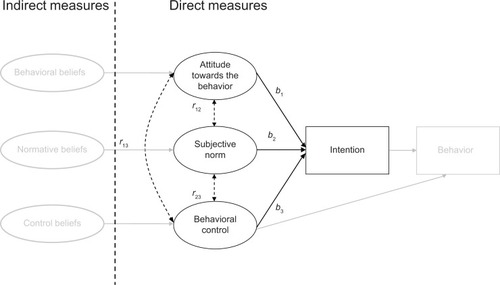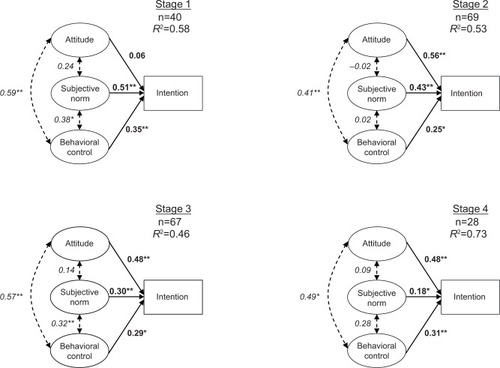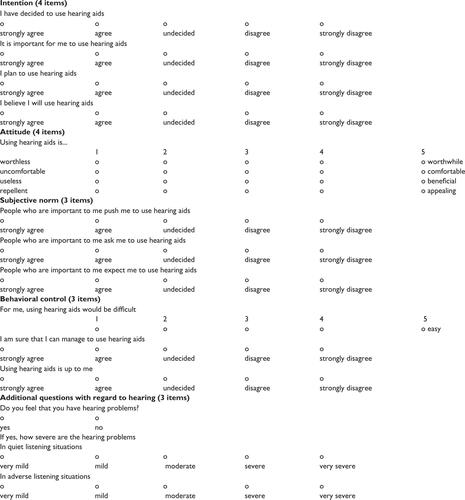Figures & data
Figure 1 Schematic of the theory of planned behavior model.

Table 1 Demographic characteristics of the participants
Table 2 Mean and standard deviation (in parenthesis) for “attitude”, “subjective norm”, “behavioral control”, and “intention” across the four stages of hearing help-seeking
Figure 2 Path models for the group data associated with different stages of the rehabilitation process.


